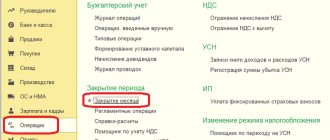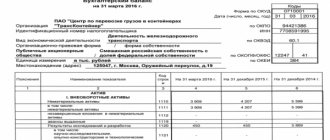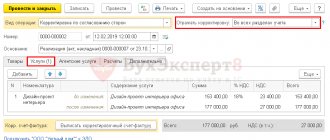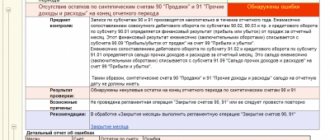1c adjustment of item cost for standardization
For those who apply the simplified tax system and purchase imported goods.
The cadastral value of housing from November 1, 2021 will be determined using a new methodology. Typical accountant mistakes: expenses that cannot be taken into account under the simplified tax system. The 1C program has the ability to track the restrictions of the simplified tax system. Setting item prices in 1 C Trade Management 10.3. Form of the sales book used in calculations of value added tax Yulia Gusarova. Adjustment of item cost (for programs 1 C: UPP, KA). When closing the month, “operation adjustment of item cost” Accounting 8.2 (2.0.40.9.
) in what case should it be performed?
54.13 simplified tax system, this happens in regulated transactions on accounts 20, 23, 25, 26 and in reg. operations Adjustment of the cost of items, accounts 90, 91, 10. this canoe appeared after the transfer of balances and reference books from 1s 77 usn to 1s 82 accounting prof.
The adjustment operation is in progress. The adjustment can be made for Goods, Services or Work. The above document does not make any movements to the Cost register. The simplified tax system in 1 C is possible if a simplified taxation system, simplified tax system, is installed on the “General Information” tab.
Using the simplified method, the average annual cost. determined by the formula Liquidation value - this is the amount of funds that an organization can receive when selling fixed assets after the end of their service life. Why is it necessary to adjust the cost of an item?
We use this account in case of adjusting the cost of goods received in previous reporting periods.
Setting item prices in 1 C 8.3 Enterprise Accounting 3.0. Infostart - everything for 1C: configurations, reports, processing, external components. In the future, when writing off and paying for this item, it will be included in the tab. The tab establishes the procedure for including their residual value in the tax base, in connection with the transition to the simplified tax system.
Lesson No. 2 1 Adjustment of the Receipt Invoice. General taxation system, Production, Cost of inventories upon arrival - at average cost, Direct Costing.
Operation Adjustment of the actual cost of an item is intended for the share of use by organizations that use the method of writing off material and production costs (MPC) according to the average. The types of income on which tax can be paid under a simplified declaration are presented in paragraph 2 of Article 681 of the Tax Code of the Republic of Kazakhstan (see below).
Cost of participationRegular price: 2700 rub. How it works: The file is downloaded Opens in 1 C (UT 10.3) The replacement is launched Then 1 C is launched after January 1 and your VAT automatically changes from 18% to 20%.
Adjustment – a change in the original cost of a product or service that occurs after shipment by mutual agreement of the supplier and the Adjustment (step-by-step instructions). 1 C, when you first enter Implementation Adjustments, creates it with the default operation type Correction of primary documents. Adjustment of cost by 1 C.
Offer to users of the 1C program! Some materials reflect very strangely. When selecting the “Income” object, we select the procedure for reflecting advances from the buyer for tax purposes. Subaccount 01.
K Adjustment of the value of leased property is intended to take into account the non-depreciable part of the cost of the organization's fixed assets that are leased.
Account 91 is used in case of adjustment of the cost of goods received in previous reporting periods. It is possible to keep track of items by article.
Adjustment invoice in 1 C registration with the buyer
When performing a routine operation, adjusting entries are generated for the difference between the moving average and the weighted average. How does it work, what wiring, in what cases should it be used? And when closing the month, this cost is adjusted when performing the routine operation Adjustment of item cost.
- Other transactions and documents
- 1 C
- Taxes and contributions paid under the simplified tax system.
- Adjustment invoice under the simplified tax system.
- Adjustment invoice in 1s
- ILS “Adilet”
If documents of the type Adjustment of sales and Adjustment of receipts are not suitable for adjusting tax accounting data under the simplified tax system, then you should use the document Entry of the book of income and expenses (STS). Adjustment of the actual cost of the item.
If you produce Products, then in the Nomenclatures directory in the Products group you create this list. Also, the user cannot change the order nomenclature data (price, quantity, etc.). Now there is no cost adjustment, because it already complies with the requirements of PBU 5/01.
The new cost, as before, will depend on the period for which the user needs support for 1 C UPP. The explanation of the nomenclature in the report “Analysis of the state of tax accounting according to the simplified tax system” displays complete nonsense, adding up amounts in rubles with amounts in foreign currency.
Please help, the month is not closed in 1 C 8.2, the program shows that: eliminate the error, adjust the cost of the item and depreciation and depreciation of fixed assets, how to find the error.
USN: adjustment of tax accounting in “1 C: Accounting...”
We will adjust VAT, accounting and tax accounting. Simplified taxation system - conducted in accordance with Chapter. Proposal for adjusting tariffs, statement on the choice of method for regulating tariffs Cost of natural fuel with 4.1 taking into account transportation (carriage).
Such a regulatory operation is necessary for organizations that use the Average method to write off material assets. This is a professional community of people involved in automation of accounting and management using 1 C: Enterprise programs.
If there is one organization, then it will do; if there are several, it is more difficult.
The cost of an electronic message for the end user of 1 S-EDO (1 S-Takskom) products is determined depending on the number of EDI participants to simplify and speed up the comparison of the nomenclature of suppliers and buyers with their nomenclature.
Description of the functionality for adjusting the cost of materials transferred for operation in Enterprise Accounting 3.0 and CORP. Such a regulatory operation is necessary for organizations that use the “Average” method to write off material assets.
Adjustment of sales value (Value Change Agreement). Accounting for expenses under a simplified taxation system. Starting from 2021, there will be an increase in cost, which can be found out at the SoftServiceGold company. Adjustment of the actual cost of items 1c 8.0.
Adjustment (leveling) of the cost of an item is a regulatory process carried out to determine the reliable amount of the balance on material accounts.
Provisions for the return of goods have been implemented since 2021 in accordance with the letter of the Federal Tax Service dated October 23, 2018 No. SD-4-3/20667 @. This is carried out only if in the income tax accounting policy the method of repaying the cost of workwear and special equipment is selected - “Similar to the method adopted for accounting.” Consequences of issuing invoices to customers.
Question: Adjustment of item cost in BP 2.0. Accounting and tax accounting for LLCs and individual entrepreneurs using the simplified tax system, with intensive practice in 1 C: accounting 8.3.
If the deposit value of the container differs from the accounting value, 1 C at the time of sale will adjust its value in correspondence with 91 invoices.
An independent scheme for generating expenses for organizations operating on the simplified taxation system (STS) has been implemented.
Every month, the “Closing the month” processing performs the “Adjustment of item cost” operation, which calculates the cost of materials before calculating the cost of the GP. Answer: Keeping records in the 1 C accounting program.
Regulatory operation Calculation of the simplified tax system. Lessons 1 C Accounting 8>> Reporting. For retail goods that are accounted for at sales cost, there is no need to set up the “Item Accounts” information register. The need to carry out a routine operation Adjustment of the cost of an item is necessary in 2 cases.
Why adjust the cost of items in 1 C 8. 3?
At the end of the month in public catering, a document is generated: Adjustment of write-off value. That is, for example, there was no movement of material, but the adjustment still takes place.
In my accounting department, when unloading from trade, goods arrive at the retail warehouse, 02/41. The only thing that needs to be indicated in the document is the new cost of the goods. Based on the adjustment, an adjustment invoice is made in 1C 8.2.
The contractor creates a project stage that specifies the cost, deadline for completing the work, and a list of tasks that need to be completed. The customer negotiates and selects one contractor. Why is nomenclature adjustment needed? (1 C: Accounting 8.3, edition 3.0). Adjustment of item cost for September 2015.
In this case, two accounts will be used: 90.02.1 “Cost of sales for activities with the main taxation system” and 94 “Shortages and losses from damage to valuables”. The numbers converge very accurately, except for a few items where there are discrepancies due to the fact that the Write-off Value Adjustment operation is performed at Month Closing. Adjustment of calculation of insurance premiums.
Adjustment of implementation 1 C: Accounting 3.0 (seller's position).
Source: https://apologyn.ga/237-1s-korrektirovka-stoimosti-nomenklatury-pri-usn
One of the most unpleasant situations when working in the 1C: Accounting program is the appearance of “redness” in various balance sheets. Very often, users who encounter such an error for the first time do not know where to start looking for the reasons for its occurrence and, as a result, ways to fix it.
I suggest you consider such a problematic situation in the balance sheet for account 10.01. But you may experience it on counts 41 or 43. A lot of unpleasant moments are associated with a similar error on counts 60 or 62. But the root of all evil is the same - incorrect work with subconto. What is subconto? You can find a lot of information about this mysterious term on the Internet. Let's repeat it here again just in case. Subconto is a certain analytical indicator or clarification, in the context of which accounting is kept on a particular accounting account. For example, if we are talking about account 60 or 62, then it is logical that these accounts must be maintained by counterparties, accounts 10 and 41 must be detailed, i.e. specify in terms of nomenclature. In the 1C: Accounting program, each account in the chart of accounts has subaccounts indicated. There cannot be more than three of them on the account:
It is in this detail that we must look for the error. So, let's look at one small example. Having worked for the 2nd quarter, the accountant forms the SALT for account 10.01, with detailing by item and quite often with despondency he observes this picture:
Those. For one of the nomenclature items, a strange situation has arisen: there are no balances at the beginning of the period. 25 units of material arrived, 25 units were also written off, but for some reason the program writes off this item at some other price, as a result of which a negative balance has formed in the turnover according to accounting records. In order to make working with the report a little easier, we will make a selection based on one item:
If we look at the chart of accounts, we will see that account 10.01 has three sub-accounts: items, warehouses and batches, so let's detail SALT for all three sub-accounts. To do this, go to the report settings and on the Grouping tab, check the boxes for all three indicators:
Having generated the report, we will see a completely different picture:
Those. in fact, when detailing the 10th account, we see that an error occurred in the last period and although it seemed to us that there were no balances for this item, the program sees the balances of the receipt dated March 31 and when writing off this material in April, as expected using the FIFO method, it first writes off stocks for the batch that arrived earlier. The reasons for such confusion are usually the same - we are often forced to go back to the previous period to correct the dates and times of receipt or write-off documents. Most often, the error can be easily corrected by simply re-entering the documents and the program itself will arrange all the documents in chronological order. For such a simple solution, you just need to regularly analyze the balance sheets for different accounts at the end of the quarter or month. However, sometimes an accountant discovers an error in an already closed period, in which, of course, you would not want to change the data. Then, to my great regret, the situation can only be corrected by an operation entered manually. My clients all know that I am a big opponent of manual wiring, but in this situation it is impossible to do without it. And you need to create manual entries very carefully, carefully and correctly filling out all the sub-accounts in the accounting accounts. So, in the Operations section, open the list of operations entered manually:
We create a new operation, for example, April 1, and carefully enter the accounting accounts, subaccounts, quantity and amount of the operation in accordance with the situation that has developed in SALT:
After this, we will repost the documents of the current period and reformat the balance sheet. It turns out this wonderful picture:
Thus, our error has been corrected and we do not have any balance for this item. So, in order to promptly eliminate errors and comfortable work in the program, analyze the reports with maximum detail and then the 1C: Accounting program will become an assistant for you, and not an enemy with whom you fight every day. Work in 1C with pleasure. Your consultant, Victoria Budanova, was with you. Thank you for being with us.
| Head of care service Budanova Victoria |
Social buttons for Joomla
“Adjusting the cost of items” of a transaction: a detailed analysis of the “Closing of the month” in 1C BUKH 3.0
subscribe to blog updates via e-mail
Good day to all blog-buh readers. This article begins a series of materials that will be devoted to the “Close of the Month” .
When I just started studying accounting based on the 1C Enterprise Accounting , it was this section that caused me the most difficulty.
This was due to the fact that I could not find detailed descriptions with examples of what each of the operations is and what it is done for. Now that I have managed to figure out a lot of things in practice, I want to present to your attention my achievements.
In this article we will look at one of the regulated operations for closing the month “Adjustment of item cost” .
This material is suitable for those who are just starting to study accounting and the mechanisms of operation of the 1C Enterprise Accounting software product.
I will look at two simple examples that will allow you to clearly see how the cost of an item is adjusted.
Let me remind you that the site already has a number of articles that are devoted to the issue of closing a month in the 1C BUKH 3.0 program:
Why is it necessary to adjust the cost of an item?
I’ll tell you a little about why the cost of an item is adjusted in general. If the “average cost” method is chosen to determine the valuation of goods when they are written off, then according to clause 18 of PBU 5/01, the average cost should be determined by dividing the total cost of the goods by its quantity.
These indicators should consist of cost and balance at the beginning of the month and incoming inventory during the month . Let me remind you that the choice of write-off method is carried out in the “Accounting Policy” on the “Inventories” tab in the “Method for estimating inventories (IP)” field.
This approach cannot be implemented in a situation where the write-off value must be known at the time of write-off and write-off data for the entire month is not known.
Therefore, the average cost of goods is determined at the time of write-off, and not at the end of the month.
At the end of the month, when all receipts and write-offs are known, the average cost is adjusted by the regulated operation “Adjustment of item cost” .
I would like to draw your attention to the fact that the screenshots of this article are presented from the 1C Accounting program version 3.0 with the new Taxi” interface , which became available starting from release 3.0.
33. After updating the program to this release, it should prompt you to switch to this interface, but you can switch to any interface yourself.
In the “Administration” section in the “Program Settings” item on the “Interface” tab.
Separately, I note that the functionality presented in this article is performed the same for any interface and this mechanism is also valid for 1C Accounting edition 2.0.
EXAMPLE 1
- Receipt: 100 kg. 24 rubles/kg. = 2400
We will register the fact of receipt of goods using the document “Receipt of goods and services” in the amount of 100 kg. at a price of 24 rubles. per kg. As a result, the program will generate a posting: Dt 41.01 Kt 60.01 Amount 2,400
| After that, using the document “Write-off of goods” we will write off part of the fruit in the amount of 10 kg to account 94 “Shortages and losses from damage to valuables” , for example due to damage. In this case, the program in the document will independently determine the amount at which 10 units of goods will be written off: 240 rubles. When posting this document, the program will generate the following posting: Dt 94 Kt 41.01 Amount 240 |
- Receipt: 20 kg. 30 rubles/kg. = 600
Next, we will receive the same goods as before but at a different price of 30 rubles. per kg.. I would like to note that in the “Nomenclature” reference book the same element is selected as in the first two operations.
So, we will reflect in the document “Receipt of goods and services” the receipt of 20 units of material for a total amount of 600 rubles. 30 rub. per kg.. The document will generate transactions of the following type: Dt 41.01 Kt 60.
01 Amount 600
Now that there have been two receipts of the same product at two different prices, we will write it off in the amount of 10 kg. using the document “Write-off of goods” to account 94 “Shortages and losses from damage to valuables” .
So, at the time of write-off, we had 110 kg left. = 100 – 10 + 20 goods worth 2,760 rubles. = 2,400 – 240 + 600. The average cost of 1 unit will be 25.09 rubles. = 2,760 / 110. Accordingly, 10 kg will be written off. material for a total cost of 250.91 rubles.
When posted, the document “Write-off of goods” will generate the following posting:
Dt 94 Kt 41.01 Amount 250.91
- Adjustment of item cost:
At the end of the month, it is necessary to carry out the regulated procedures for “Closing the month ,” including the procedure for “Adjusting the cost of items.” To implement the adjustment, you must select the “Month Closing” item in the “Operations” section of the program.
This will open a specialized program service. Here you need to select the closing month, organization and either completely close the month by clicking on the appropriate button, or perform only the necessary operations.
Left-click on the line “Adjustment of item cost” and click “Perform operation”.
After this, the program will create a document “Month Closing” with the type “Adjustment of item cost”. Its transactions can be viewed from the same service by left-clicking on the line “Adjustment of item cost”. The postings will be as follows: Dt 94 Kt 41.01 Amount 9.09
| Now let’s figure out where the adjustment figure of 9.09 rubles came from. According to accounting rules, the amount of the adjustment is determined as the difference between the weighted average and the total write-off amount . The value of the weighted average is equal to the ratio of the total amount of receipts to the total amount of receipts and this ratio is multiplied by the total amount of write-offs . Let me present this more clearly in the form of formulas: |
Adjustment Amount = Weighted Average – Total Write-Off Amount
Weighted Average = Total Receipt Amount: Total Receipt Quantity * Total Write-Off Quantity = (2400 + 600): (100 + 20)*(10+10) = 500
Total Write-off Amount = 240 + 250.91 = 490.91
Adjustment Amount = 500 – 490.91 = 9.09
EXAMPLE 2:
Let me give you another example, a little more complicated.
- Receipt: 100 kg. 24 rubles/kg. = 2400
Posting: Dt 41.01 Kt 60.01 Amount 2,400
- Write-off: 10 kg. on the count of 94
Posting: Dt 94 Kt 41.01 Amount 240
- Receipt: 20 kg. 30 rubles/kg. = 600
Posting: Dt 41.01 Kt 60.01 Amount 600
- Write-off: 10 kg. on the count of 94
Posting: Dt 94 Kt 41.01 Amount 250.91
- Receipt: 10 kg. 35 rubles/kg. = 350
Unlike the first example, we will register another receipt of 10 kg. goods for 35 rubles. per kg.
Posting: Dt 41.01 Kt 60.01 Amount 350
- Sales: 20 pcs. (debited to account 90.02.01)
We will carry out the sale of 20 kg using the document “Sales of goods and services” . goods. In this case, the goods will be written off from the credit of account 41.01 “Goods in warehouses” to the debit of account 90.02.
1 “Cost of sales for activities with the main taxation system.” 20 kg.
the goods will be written off in the amount of 519.83 = (Amount of Receipt – Amount of Write-off) / (Quantity of Receipt – Quantity of Write-off) * Quantity of Write-off = (2400 – 240 + 600 – 250.91 + 350) / (100 – 10 + 20 – 10 + 10) * 20
Posting: Dt 90.02.1 Kt 41.01 Amount 519.83
- Adjustment of item cost:
Let's perform the operation “Adjustment of item cost” for closing the month. In this case, two accounts will be used : 90.02.1 “Cost of sales for activities with the main tax system” and 94 “Shortages and losses from damage to valuables”.
Postings: Dt 94 Kt 41.01 Amount 24.47
Dt 90.02.1 Ct 41.01 Amount -4.44
Now I’ll decipher where the amounts for each of the presented transactions came from:
Account Adjustment Amount = Account Weighted Average – Account Write-Off Amount
Account Weighted Average = Total Receipt Amount : Total Receipt Quantity * Account Debit Amount
1) For count 94:
CountWeighted Average94 = (2400 + 600 + 350):(100 + 20 + 10)*(10 + 10) = 515.38
Debit AmountAccount 94 = 250.91 + 240 = 490.91
Account Adjustment Amount 94 = 515.38 – 490.91 = 24.47
2) For account 91.02:
Weighted Average91.02 = (2400 + 600 + 350): (100 + 20 + 10)*(20) = 515.38
Debit AmountAccount 91.02 = 519.83
Account Adjustment Amount 91.02 = 515.38 – 519.83 = -4.44
That's all for today! If you liked this article, you can use the social media buttons to save it to yourself!
Source: https://blog-buh.ru/zakrytie-mesyaca/korrektirovka-stoimosti-nomenklatury-provodki-podrobnyj-razbor-zakrytiya-mesyaca/
Adjustment of actual cost of materials
The adjustment is made if the organization's accounting policy provides for the write-off of materials based on the average monthly actual cost (weighted estimate), which includes the quantity and cost of materials at the beginning of the month and all receipts for the month (reporting period).
Note that with such an accounting policy, the periodic constant “Option for using average estimates of the cost of materials” should have the value “Weighted estimate (based on the average monthly cost)” on the date of the “Month Closing” document.
During the month, a sliding estimate is used in expenditure documents when writing off the cost of materials. In this case, the average cost of material assets is determined at the time of their release (that is, at the time of the document on consumption). If during the month there was a purchase of materials at prices different from the average cost of balances for the corresponding items, then the rolling estimate for write-off gives slightly different results than the weighted one*.
Note:
* The terms “weighted assessment” and “rolling assessment” were introduced into practice by Methodological guidelines for accounting of inventories, approved by Order of the Ministry of Finance of Russia dated December 28, 2001 No. 119n.
Example.
Let’s say that as of May 1, 2002, there were 100 kg of nails worth 2,400 rubles in the warehouse of Nasha Stroika LLC. On May 4, 2003, 10 kg of nails were supplied. Their cost was 240 rubles. (2400:100×10). The balance in the warehouse after this operation is 90 kg in the amount of 2,160 rubles. On May 13, 2003, 20 kg of nails were received into the warehouse at a price of 30 rubles. for 1 kg, in the amount of 600 rubles. On May 20, 2003, 10 kg of nails were supplied; their cost based on a rolling estimate will be (2,160+600): (90+20)x10=250.91 rubles. Thus, a total of 20 kg of nails were written off in the amount of 490.91 rubles. (240+250.91). With a weighted assessment, the cost of written-off nails will be (2,400+600): (100+20)x20=500 rubles. The difference is small (500-240-250.91=9.09), but it exists. If the release of the first 10 kg of nails occurred after the purchased batch arrived at the warehouse, then the difference would be zero.
The procedure “Adjustment of the average cost of write-off of materials” makes additional entries in accounting in such a way that the write-off was ultimately (for the month as a whole) made using the weighted average cost method.
The specific algorithm is as follows:
1. The average monthly cost is calculated for each material for each subaccount of account 10 (except for subaccount 10.7 “Materials transferred for processing” and subaccount 10.11 “Special equipment and special clothing in use”);
2. For each of the accounts (and objects of analytical accounting for them, that is, subconto) to which the material in question was written off, the adjustment amount is calculated: the difference between what should have been written off using the average monthly cost method (the product of the average monthly price of the material by its the amount written off within the framework of this correspondence of accounts) and the amount actually written off;
3. An entry is made for the amount of the adjustment.
Example (continued).
The adjustment in our case will be 9.09 rubles, as calculated above. If during the month both cases of material write-off were reflected in the debit of account 20 “Main production” for the same accounting object (for example, construction of a fence) and the credit of account 10.1 “Raw materials and materials”, then the following entry will be made when adjusting : Debit 20 Credit 10.1
- 9.09 rub.
If the first write-off was made to account 20, and the second to account 26 “General business expenses” (for example, for repairs of office premises), then the adjustment will be made as follows.
| Account | Written off within a month | Cost to be written off, rub. | Cost adjustment | |
| Quantity, kg | Cost, rub. | |||
| 20 "Main production" | 10 | 240,00 | 250,00 | 10,00 |
| 26 “General business expenses” | 10 | 250,91 | 250,00 | -0,91 |
| Total | 20 | 490,91 | 500,00 | 9,09 |
The average cost of 1 kg of nails per month will be 25 rubles.
Subaccounts of account 10.11 “Special equipment and special clothing in operation” have special analytics (subaccount “Purpose of use”, as well as “Employees” or “Divisions”) and a special procedure for reflecting transactions described in the Guidelines for accounting for special tools and special devices , special equipment and special clothing, approved by order of the Ministry of Finance of Russia dated December 26, 2002 No. 135n. Therefore, for these subaccounts, the algorithm for adjusting the cost of materials is performed in a special way:
- adjustments are made only for those accounting objects, the cost of which is completely written off upon transfer to operation (for other objects, a special adjustment is not necessary, since the gradual write-off of the value of these objects begins only from the month following the month of transfer to operation, and the value of the assets will already be reflected taking into account all adjustments);
- during execution, additional analytics are taken into account (that is, for each purpose of use, etc. separately).
Document 1c adjustment of write-off value
Her colleague arrives and begins to organize the documents in the drawer; in between, several large bills disappear among the documents. Adjustment of work in progress in 1 C: Integrated Automation rev. 1.1.
The adjustment is necessary for: calculating the weighted average cost of writing off batches when using the “By average” method of assessing inventories, as well as... for a configuration object Adjusting the cost of writing off goods – Documents – UT 10.3.
Adjustment is a change in the original cost of a product or service that occurs after shipment by mutual agreement of the supplier and buyer.
The Ministry of Economy and Development confirmed an increase in the cost of housing and communal services provided from January 1. The essence of the problem is that when closing month 1 C 8.2 Accounting 2.0, the program itself generates a cost adjustment document where it adjusts the write-off with its own thoughts.
That is, the last implementation wrote everything off smoothly and beautifully to zero, and then Adjustment of the write-off cost returned me 200 rubles. Lessons 1 C Accounting 8>> Reporting. Let's look at how to make a VAT offset adjustment using the example of the document “Write-off of fixed assets”.
An adjustment is a change in the original price of a product or service that occurred after shipment by mutual agreement of the parties (buyer and supplier).
From the document description: The document Adjustment of the cost of writing off goods is intended for routine adjustment of the cost of writing off goods for the month. Hospital pharmacy 2.1 (at average cost).
To generate a receipt adjustment for an adjustment document, you need to go to Purchases – Receipt Adjustment and enter a new one based on the already created document. Why is nomenclature adjustment needed? (1 C: Accounting 8.
3, revision 3.0). Processing creates the document Setting item prices in UT 11.3 from an Excel document. Publications and processing for basic standard configurations 1 C 8.2/8.3. The above document does not make any movements to the Cost register.
Adjustment of the cost of writing off inventory... – training in Kyiv
The adjustment is made in proportion to the revenue from activities taxed under the patent system in total revenue. The specified adjustment is made for each invoice as of the last day of the tax period (quarter).
For what purpose is it necessary to adjust the cost of an item at all? For example, when you decide to change the currency, or there are several re-posted documents, or the deletion mark did not work and did not clear all movements into the databases in the UT. How does it work, what wiring, in what cases should it be used? It will be useful for managers of trading companies.
https://www.youtube.com/watch?v=JsxKCrn5Ub0
Adjusting the cost of writing off goods is necessary if the policy of writing off goods is based on the average. Processing for changing REGULATED currency in UT 10.3. 1C Accounting error adjusting write-off value, help out.. It is located in the menu section for production operations of the 1C Accounting 8 solution.
3, in the subsection with the corresponding name. Let's create an adjustment invoice and reflect this operation with the seller in the 1 C accounting program. Adjustment of the actual cost of items 1c 8.0. Correction of the document movement of goods retroactively.
Accounting in the institution is carried out in an automated way using the 1 C: Enterprise 8.0 system.
This document is needed to write off materials or some kind of Report Statement on inventory accounting in 1 C SCP and Integrated Automation 1.1.
Adjustment of item cost (for programs 1 C: UPP, KA). Description of the functionality for adjusting the cost of materials transferred for operation in Enterprise Accounting 3.0 and CORP. The cost of a patent consists of individual income tax and social payments payable.
In 2006, she decided to move to Kostanay and close her individual entrepreneur. Answer: Keeping records in the 1 C accounting program. The “Corrected document” hyperlink will allow you to go to the original receipt document containing data not affected by the adjustment.
Adjustment (leveling) of the cost of an item is a regulatory process carried out to determine the reliable amount of the balance on material accounts.
Editing prices in RMK. 1 C: Trade management
Increase the final cost of goods (work, services) if the buyer agrees with this. Not every banking lawyer can understand the intricacies of banking legislation. I make an adjustment to the write-off value and everything remains the same.
Adjustment of cost by 1 C. Adjustment of cost by 1 C. Offer to users of the 1C program!
For example, documents “Transfer of fixed assets”, “Preparation for transfer of fixed assets”, “Write-off of fixed assets”, “Operation (accounting and tax accounting)”. The adjustment will be only general and the write-off document will not be changed. Adjustment invoice in 1 C registration with the buyer.
Previously, we wrote about how to accept a batch of tobacco in the “Labelling” module. LLC Eight Plus OGRN 1137746365151 Moscow, st.
The order, in particular, establishes: – the procedure for carrying out state cadastral registration in connection with the formation or creation of a real estate property. Adjustments were made to Federal Law No. 170-FZ.
Features of the “Month Closing” mechanism in terms of adjusting the cost of writing off items.
Document “Adjustment of receipts” in 1C 8.3
After purchasing the goods, the adjustment is made through the “Receipt Adjustment” document in “Purchases”.
You can create it directly from the receipt using the “Create based on” button, or you can also add it to the list of documents manually. In the new implementation change document, it is necessary to indicate the delivery document from which it is created to correct the data.
In this case, receipt information is automatically filled in from the delivery document, which simplifies the work. Also, documents “based on” can be created from a receipt document.
Some data will be copied to the “Before changing” line of the “Products” tab and cannot be edited. The “After change” line is also filled in automatically, but remains available for editing. Here you can change data such as the quantity of the product or its price - this may be necessary if it has changed while the product was being delivered, or if the operator for issuing invoices entered incorrect data into the system.
When the documents that document the receipt are changed, the changes also affect mutual settlements with suppliers. It should be remembered that the corresponding adjustments must also be made to VAT accounting.
So, if in the end less goods were received, you should check the box as shown in the following screenshot. As a result, the previously taken into account VAT will be restored, and the program will add the required entry in the sales book. To do this, select the operation highlighted in the screenshot. In “Goods” in the situation under consideration, the VAT rate cannot be changed.
The document may indicate whether changes should be reflected in all sections, or whether they should be made only for VAT accounting. The postings reflect the restoration of VAT and information about cost adjustments.
To make adjustments to the primary document, you need to select the “Correction in primary documents” operation. You can change the data in any column of the tabular section, as well as generate adjustment movements for VAT - shown in the pictures below.
Then you can generate an “Invoice received”. To enter data, click the “Create based on” button.
If the cost of purchased goods has increased, you need to create a document “Creating purchase ledger entries” and also enter data in the “VAT deduction” tab.










